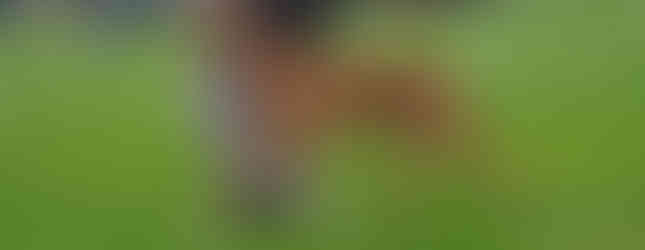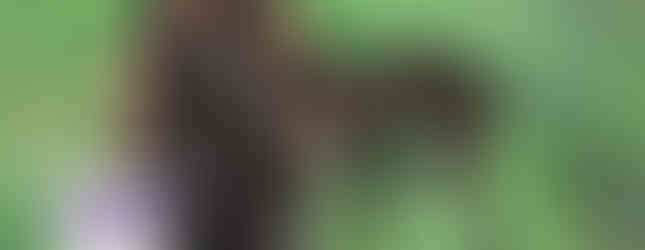One of the first things I am asked by people who are new to the breed but have followed the European based Facebook Azawakh groups is: what is up with all the fighting over color? The fact is, Azawakh come in almost every possible color combination natively in their country of origin. This is a documented fact going back to the 1970s. Francois Roussel details a variety of colors in his 1975 field study.
One finds coat colours ranging from very pale sand through to self black. Those seen most frequently are sand, fawn and red. The presence of a black mask and brindle stripes is frequent. The coat is always parti-coloured. The distribution of white markings is as follows:
- blaze on head + - collar + - socks or stockings +++ - white markings to brisket + + + - ventral decolouration + + + - white tip to tail ++
White markings are sometimes tiny: small mark on brisket or white hairs on toes. Piebald coat itself is extremely rare (less than 0.5 %)
*Emphasis added
Elisa Pelo, an Azawakh and Galgo breeder in Europe (Kel Albufera), has an excellent post that translates the color genetics from Roussel's 1975 understanding of them to modern terms.
Association for the Burkinabe Idi du Sahel (ABIS) which was created to study Azawakh in their region of origin as well as to import Azawakh from that region to broaden a very small gene pool did research on Azawakh for two decades. Here are just some of their findings on prevalence of color in the region of origin, as detailed by Gabriele Meissen (Tombouktou).
All of these reports found that colors beyond red, sand, brindle have been found in the Sahel as long as the breed as been known in Europe. These are not new additions to the breed. What's more, the region is incredibly isolated and the chances of there being other breeds for Azawakh to have mixed with are incredibly low. They are, in fact, much lower now when there are very few visitors (none with dogs) to the region than when colonials populated the area.
Black is naturally occurring and always has been and likely always will be. Those who love revisionist history have taken to calling any dog that hasn't been inbred (I have no issue with purposeful line breeding) heavily on the original small number of dogs imported to Europe mongrels. They like to say any dog that comes from outside a tiny area within the Sahel is a mongrel conveniently ignoring that multiple European foundation dogs did not originate from that region. They like to say black isn't functional yet in recent years, when it's hotter than ever, there's been a prolific black stud, why there are more black dogs being found recently (a much much more plausible explanation than them being mixed in such an isolated region).
Fun fact- the FCI (European) Azawakh breed standard and AKC (American) Azawakh breed standards used to be very similar in language. The main divergences were that the AKC standard has always said "color and markings are immaterial", allowed for rear dewclaws, and didn't fault light eyes. I do not have a link to the original FCI standard, but it is my understanding that the FCI and AKC standards were once even closer in language than the 1998 FCI version to which is publicly available.
Why does this trivia matter? Is it not, simply that? Trivia, a useless fact cluttering up my brain space. It matters because I have spoken to quite a few AKC judges who have condemned the American breed fanciers for "changing" the standard from country that sets the standard (France). Yet it is the FCI standard that has changed over and over again. It has been changed to restrict naturally occurring colors even further. It has been changed to better suit the dogs that are being shown in the ring.
I once had a discussion with someone who considers themselves an expert in the breed, though they have not ever owned an Azawakh themselves. While we were talking, they recounted a very famous story, one I had heard early on when I was first learning about the breed. They told of Dr. Pecar traveling down the street one day in Mali, where he was stationed and seeing a striking dog outlined in the doorframe. This dog was unlike any he had ever seen, so regal and noble. That dog, according to the story, was Gao, the first foundation dog of the Yugoslavian line.
This prominent person held this up as proof that the Azawakh that have been imported from the Sahel in the last five years are impure, because they lack that awe-inspiring quality. My response to that assertion? So many fanciers have lost the plot. They have become so accustomed to the overly refined, wispy, fragile looking European bred Azawakh that they forget that an average person, unaccustomed to any Azawakh at all, will find a typical import from the Sahel just as fascinating and traffic stopping as a European bred one.
Tabiri is my dog with the most substance. Many many breed fanciers have called him rustic, called him too coarse. We have literally stopped traffic. I have seen people, jaw open, have to swerve to correct their course because they were staring at him so hard. I have walked into an AKC dog show where I brought Tabiri for a health clinic and literally there were two young girls jumping up and down pointing about the Azawakh. This is important. 1. He was instantly recognizable by people who have never met the breed. 2. He is equally as awe inspiring as my European bred boy (who I've had similar experiences with). When I brought Moss (Amastan) to UKC Premier with me this year anyone that knew the breed instantly recognized him as an Azawakh.
There is this argument that dogs with recent COO blood lack type. Type, according to the renowned Richard Beauchamp, is made up of five qualities- silhouette, head, coat, movement, and character. Type is what allows you to tell one breed from another. The assertion that COO imports and Azawakh with recent COO blood is made by those who have never walked down the street with one of those individuals and had a random person excitedly cross the street to ask you if that's an Azawakh. If there random public can tell what the breed is, then why can't breed fanciers?
David Moore has a lovely alternate to the Azawakh standard that he wrote based on the phenotypes of the dogs within the Sahel. It was written in response to one of the many changes made to the FCI Azawakh breed standard. I highly recommend those who are not blinded by the colonial revisionist tendencies of much of the Azawakh fancy to read through the document because it makes for very enlightening reading. And, while I breed to the Untied States standards (AKC and UKC) when I have a question where those standards are silent, it is a document I reference often (and don't find it much in conflict with the American standards).
To me, it is laughable that when I publish a litter announcement with a F1 dam who happens to be black brindle (which I will continue to always note is actually not technically excluded under the FCI standard) the fancy erupts into chaos and pushback. This dog has not been shown in AKC because she does not have a three generation pedigree, but she has been shown in UKC often under AKC approved Azawakh judges and frequently beats Azawakh that have done quite well in the AKC show ring.
A good litter announcement should show a number of things. It should show name (both call name and registered names) It should include titles, awards, and health testing. I love when pedigree and COI (genetic or pedigree) is included because it is helpful information for fanciers. But the very most important piece of a litter announcement is that it shows the world the structure of the dogs being bred.
A good gaiting (movement) picture should show many things. It should show balance (in breeds that are supposed to be balanced). Does the dog’s front and rear angulation match? This is, in my opinion, more evident at a trot than in a stack. How can you tell? Is there equal distance between the dog’s leading food and their converging feet compared to the trailing foot and the converging feet? If so, the dog is balanced.
Are all feet equally off the ground? If not, you’re looking at two potential issues. 1. The picture was simply taken at the wrong time. This can influence the appearance of balance in a photograph too. Additionally you run into issues like photos that are taken at a slight angle and thus are foreshortened. 2. One of the dog’s limb proportions is incorrect (in breeds where all the proportions (scapula/upper arm and croup/first thigh) should be equal).
What do you do if you have a balanced dog with good limb proportions but don’t have a good picture? Don’t use the picture if it doesn’t represent the dog correctly. I’d rather have a stack and head shot with no gaiting picture than a gaiting picture that doesn’t showcase my dog properly. What do you do if your dog isn’t balanced or lacks proper proportions? I post a picture that showcases them to the best of their ability as dictated by structure.
Let’s look at my announcement for my Anubi x Amalu planned litter.

Immediate impression of the dogs being bred? Notably taller than long, open angled, balanced, they move with perhaps a bit too much reach but are overall quite moderate compared to many. Expression is reserved and fierce. Lovely ear set and carriage. Obliquely set, dark pigments, dark almond eyes. Do they have faults? All dogs do. Both dogs are a bit long, a bit over angulated, and their chest has a bit too much depth. I am knowingly doubling up on those with this pairing because I am prioritizing a more moderate substance and better length of leg. Those faults are not damning and I will assert their movement pictures are some of the best you will find on an Azawakh ad.
Want to check my assessment of their balance? There are the numbers (the reference scale is out of sight, but it was set based on Anubi, who I know is 29").

But photos can be manipulated. Yes, they can, you're right. So here's the raw images for you to look over. Other than color balance and image size to make a cohesive ad, nothing has been altered from the originals.
Notice in the win picture for Amalu how clear the sand stripe on her leg is? You can see traces of sand on her ear, hip, and shoulder as well. Perhaps the biggest piece of irony of those who will call her a mongrel is that Amalu is in fact black brindle, not black. And black brindle is allowable under the FCI standard. There are several lovely true black Azawakh in the United States and Europe who do belong in the genepool by virtue of their structure and type, but Amalu is not even against the narrow, colonialistic standard they love so dearly, which is rich.
If Amalu's quality is overlooked because of the color of her coat, when Anubi is held up as perfectly acceptable, I strongly suggest people go back to working on honing their eye for Azawakh structure.











